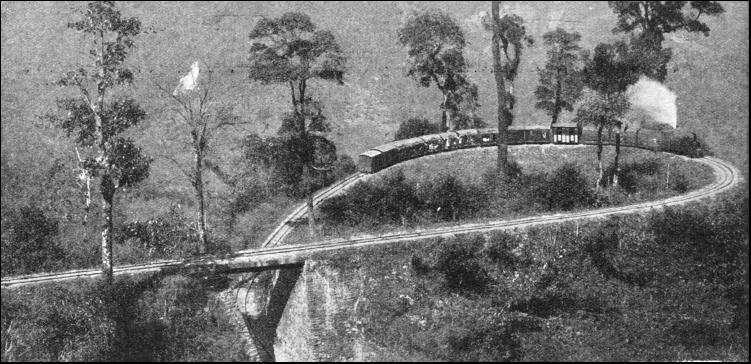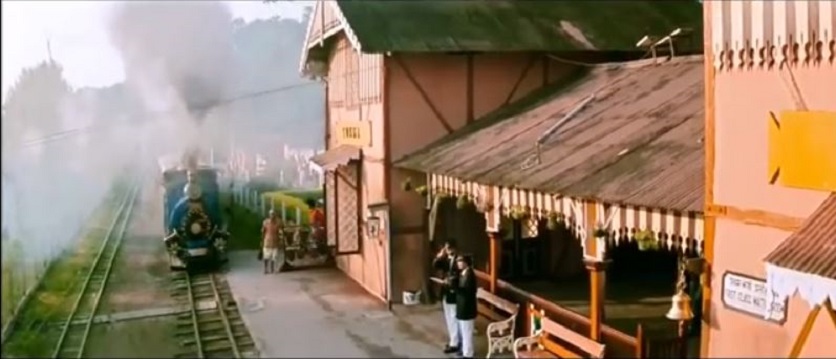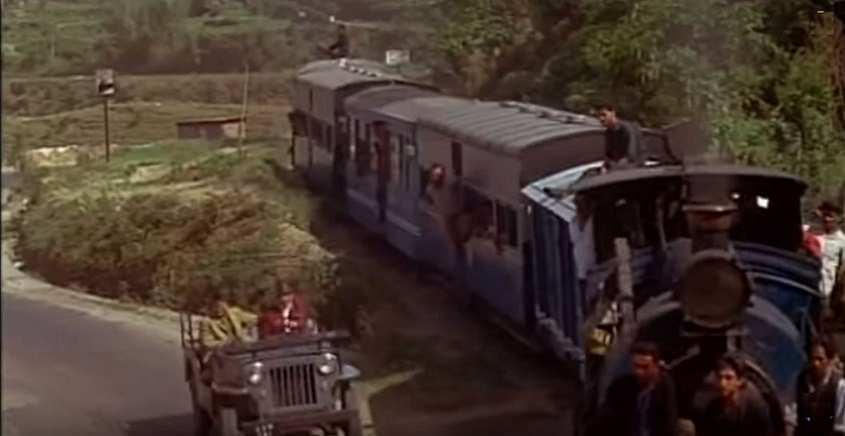Darjeeling Himalayan Railway
| Line 32: | Line 32: | ||
DHR has its origins in the latter part of the 19th century. Darjeeling (or Dorje-Ling, place of Lama Dorje, as is was originally called) had been developed by the British who had initially leased a strip to the south of the Himalayas from the rulers of the erstwhile kingdom of Sikkim, for a sanatorium for British troops as the climate was found to be salubrious. | DHR has its origins in the latter part of the 19th century. Darjeeling (or Dorje-Ling, place of Lama Dorje, as is was originally called) had been developed by the British who had initially leased a strip to the south of the Himalayas from the rulers of the erstwhile kingdom of Sikkim, for a sanatorium for British troops as the climate was found to be salubrious. | ||
| − | [[File: Darjeeling Himalayan Railway | + | [[File: Darjeeling Himalayan Railway 1969a.jpg| Darjeeling Himalayan Railway in '' Aradhna '' (1969)|frame|500px]] |
Later this tract, including Darjeeling was annexed to the British Empire resulting in rapid progress to the region. By 1878, Calcutta, the capital of British India, was linked to Siliguri by rail. Till then, the only link between Siliguri and Darjeeling was a hill cart road used by either horse drawn carriages or bullock carts. As a result, the journey took almost five to six days. Tea cultivation had also developed and the need for suitable transportation was felt (as the existing horse drawn carriages and bullock carts were proving to be inadequate). | Later this tract, including Darjeeling was annexed to the British Empire resulting in rapid progress to the region. By 1878, Calcutta, the capital of British India, was linked to Siliguri by rail. Till then, the only link between Siliguri and Darjeeling was a hill cart road used by either horse drawn carriages or bullock carts. As a result, the journey took almost five to six days. Tea cultivation had also developed and the need for suitable transportation was felt (as the existing horse drawn carriages and bullock carts were proving to be inadequate). | ||
Revision as of 21:35, 6 August 2017
This is a collection of articles archived for the excellence of their content. Readers will be able to edit existing articles and post new articles directly |
Imaarat:A toot from the past
By GM Kapur Apr 18 2014 Financial Chronicle
Darjeeling Himalayan Railway is an engineering marvel that tackled mountainous terrain with ingenious solutions

The sensation was pleasurable — intensely so; it was sudden and immense exaltation, a mixed ecstasy of deadly fright and unimaginable joy. I believe that this combination made the perfection of human delight. This is the most enjoyable day I have spent on the ea¬rth. It has no fault, no bl¬emish, no lack, except that there are only 35 miles of it instead of 500” —thus de¬scribed Mark Twain after being on the Darjeeling Him¬al¬ayan Railway (DHR) mo¬re than a 100 years ago.
The first — and still — the most outstanding ex¬ample of a hill passenger railway, DHR opened in 1881 connecting Siliguri in the foothills of the Hi¬malayan range in the north east with Darjeeling, climbing more than 2,000 metres in the mountainous region in the process. It was a marvel of engineering as it applied bold and ingenious solutions to the problem of establishing an effective rail link across this terrain of great beauty. It is a tribute to the builders that it is still fully operational and re¬tains most of its original features intact.
DHR has its origins in the latter part of the 19th century. Darjeeling (or Dorje-Ling, place of Lama Dorje, as is was originally called) had been developed by the British who had initially leased a strip to the south of the Himalayas from the rulers of the erstwhile kingdom of Sikkim, for a sanatorium for British troops as the climate was found to be salubrious.
Later this tract, including Darjeeling was annexed to the British Empire resulting in rapid progress to the region. By 1878, Calcutta, the capital of British India, was linked to Siliguri by rail. Till then, the only link between Siliguri and Darjeeling was a hill cart road used by either horse drawn carriages or bullock carts. As a result, the journey took almost five to six days. Tea cultivation had also developed and the need for suitable transportation was felt (as the existing horse drawn carriages and bullock carts were proving to be inadequate).
A detailed scheme for a steam tramway was submitted to the government of Bengal in 1878 and was approved in 1879 when construction also began. Between March 1880 and July 1881, the line was commissioned in stages. First to Tindharia, then to Kurseong and finally to Darjeeling. The rail link cut the journey time to less than 24 hours.
The total length of the DHR is 87.4 km, which is covered by a two feet (610 mm) gauge railway, rising from the plains at Siliguri to height of 2,258 m above sea level at Ghoom and finally reaching 2,074 m above sea level at Darjeeling. There are 456 bridges, (251 corbelled arch bridges) and 153 level crossings (all unmanned). There are 872 curves, maximum curvature being 120 degrees. The total length of line on curves is 59.4 km, The length of the line on curves of more than 60 degrees is 23.5 km.
To overcome natural obstacles, the line followed the hill cart road, avoided the necessity of big bridges, avoided tunnels, kept the investments low and maintained the steep gradient (1:25) by adhesion only.
Great ingenuity was shown in three ways: 1) zig-zagging and criss-crossing across the hill cart road; 2) running a loop where the train describes a full circle to finish at a similar spot some 20 feet higher; 3) reversing on a Z-shaped layout where the train runs forward, reverses up the slope, then proceeds forwards parallel to the approach line but at a higher altitude.
This made the construction of the DHR one of the greatest engineering feats of the 19th century. That it is still fully operational in the 21st century is an industrial heritage wonder of the world and now a Unesco designated heritage site since 1999.
(GM Kapur is convener of the West Bengal chapter of Intach)




